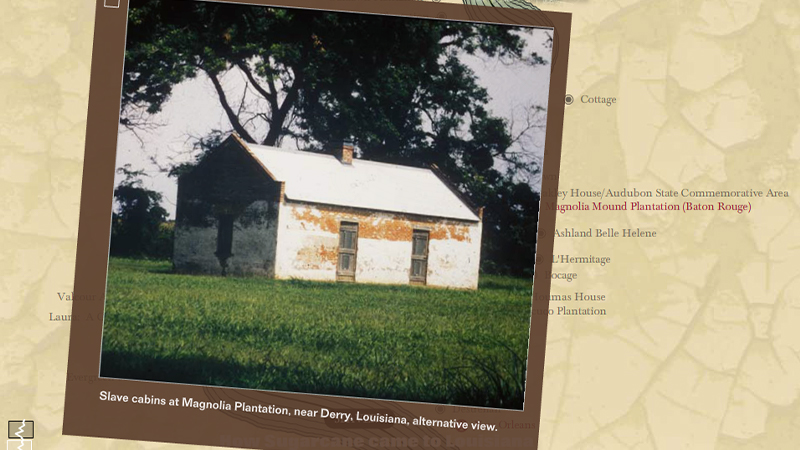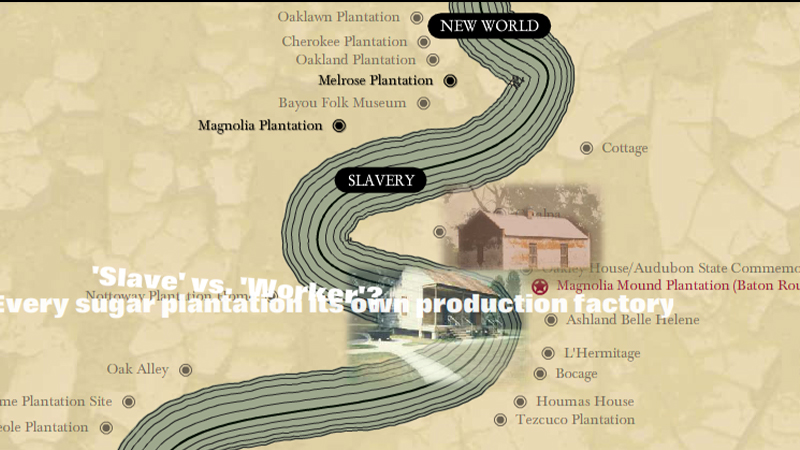"Slavery's Ephemera" seeks to address the fact that "[n]early 150 years after the height of the plantation South, the presumed 'romance' of the era still seems to hold sway in the American national imaginary. Tourism at plantation sites has surged in recent years. The visitor to these locales surveys a very particular past, for tour guides typically focus on architectural spectacle and period furnishings as they sketch a specific (and usually white-washed) history of ephemeral southern grandeur. The visiting tourist is powerfully positioned within a mise-en-scene of imagined hospitality, an immersive experience underwritten both by the mansions' scale and lush settings and by the simultaneous erasure of virtually all traces of slavery. The visitor is swept into a stage set ripe for fantasy, creating a powerful scene for the projection of romance and structuring a sort of mobility through an imagined space of history. This fantasy unfolds in an isolated temporal and geographic zone, narrativized as separate in space and time, a lost moment reflecting a 'gentler' past that mustn't be disturbed by the ghostly presence of the slave. These tours serve to freeze the possible meanings of the South, the plantation, and the past along very narrow registers.
Slavery's Ephemera pries open these affective registers and powerfully insists that the plantation be reanimated via its many complex, embedded, and embodied histories. Designed as a companion piece to Judith Jackson Fossett's book manuscript on the lingering presence of the plantation today, the project reflects upon and recombines the results of three extensive research trips to antebellum sites in southern Louisiana. In authoring an 'alternative narrative' of plantation geographies and architectures, Fossett, working with Erik Loyer, also crafts an alternative immersive experience. The tour they construct refuses the neat linearity and simple closures that dominate the experience of the traditional plantation tour. As you explore the piece, you are not led through a carefully orchestrated narrative along a lovely landscaped path. Rather, you encounter various sites, artifacts, and images that seemingly float free of one place or one time. Juxtaposition and layering replace linear history, highlighting the ephemeral status of our encounters with slavery's remnants as well as the ideological stakes of tourist history.
What's to be gained by the modes of collision such an experimental format underwrites? Interacting with the piece sets in motion a number of elements: key words flow down the river, jamming up at various points while sometimes racing away from the inquisitive cursor; provocative phrases fade in and out of sight; images overlay the terrain. The parts never coalesce into a neat whole; a nostalgic plantation image abuts a chemical plant; tourist souvenirs bump up against histories of oppression; real estate ads meet academic prose. As such, Slavery's Ephemera replays at the experiential level the schizophrenia that so characterizes American sentiments about the South. The region has long served as a screen upon which we project various fears, hopes, and fantasies. This project refuses to fix the meaning of the South in a single moment or image while also underscoring the many things the region can still teach us. For Fossett, the material and ephemeral culture of the South have much to tell us about the nation and the world." – Vectors Journal Editorial Staff
1 COPY IN THE NEXT
Published in Fall, 2006 by Vectors in Volume 2, Issue 1.
This copy was given to the Electronic Literature Lab by Erik Loyer in November of 2021.
PUBLICATION TYPE
Online Journal
COPY MEDIA FORMAT
Web


